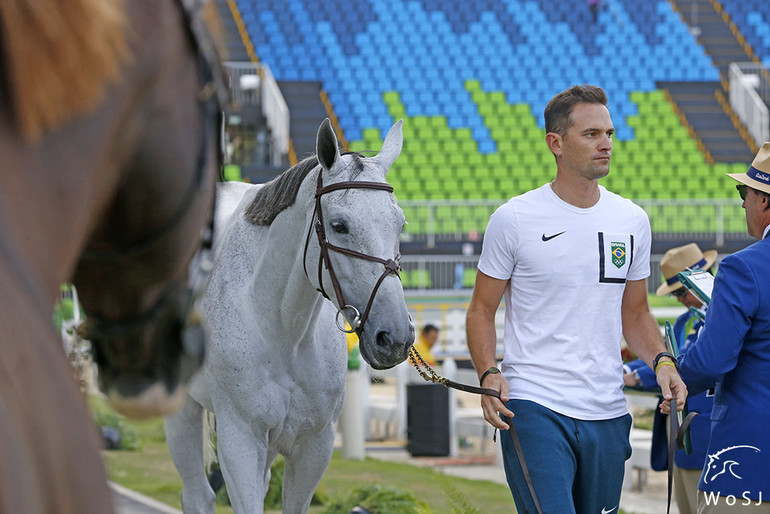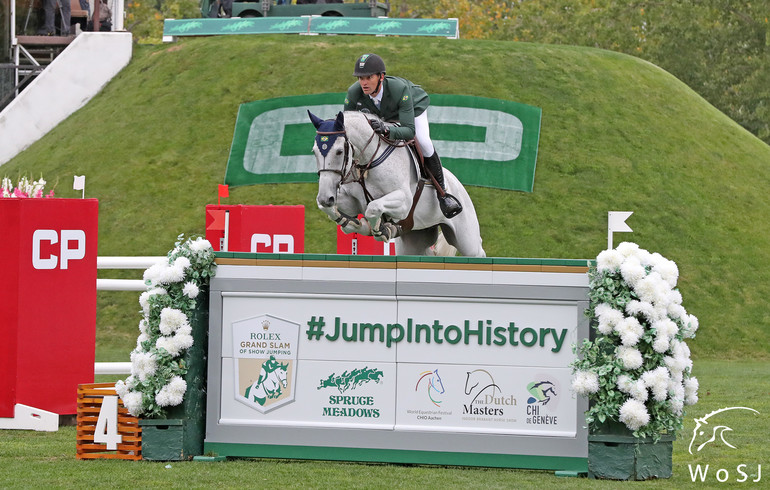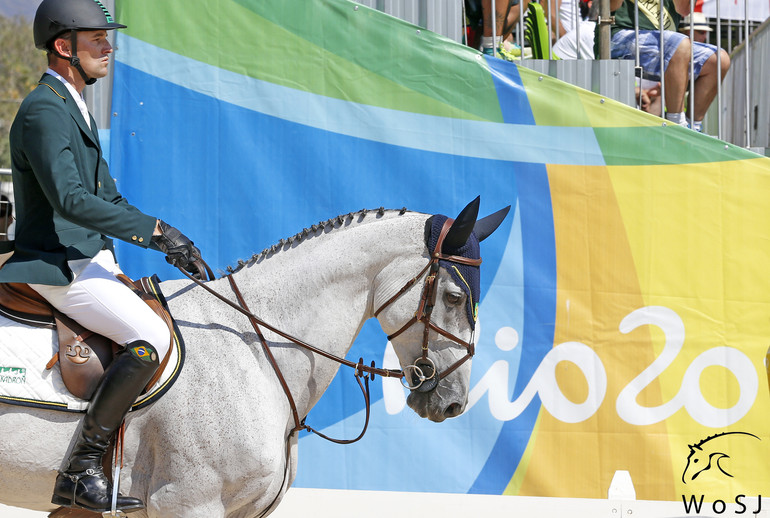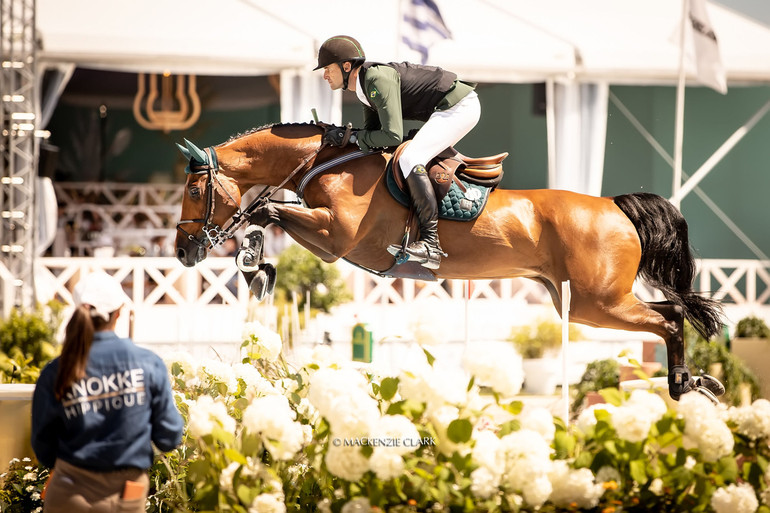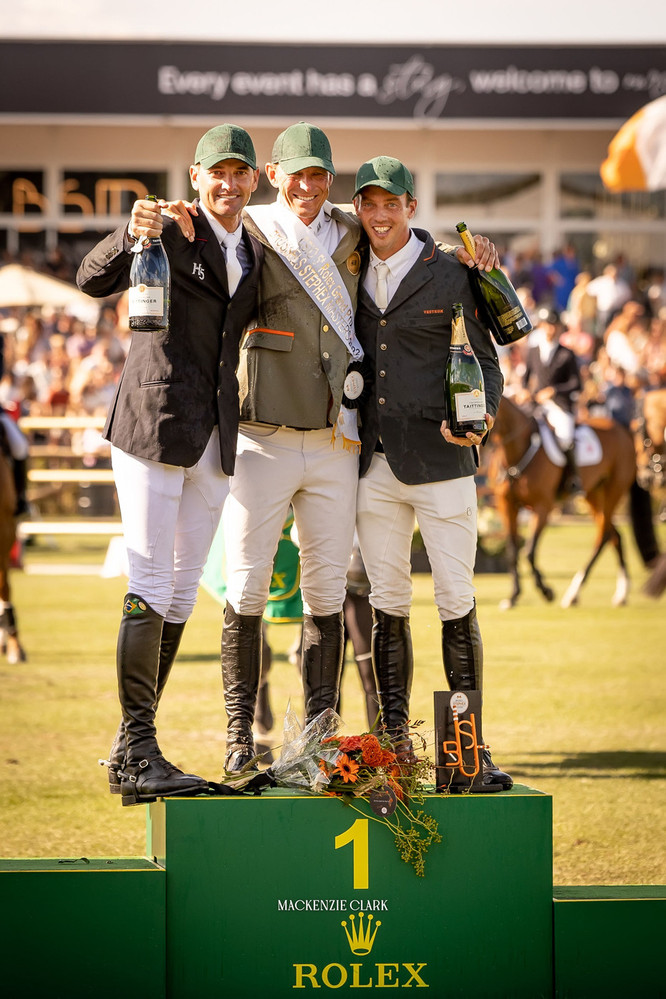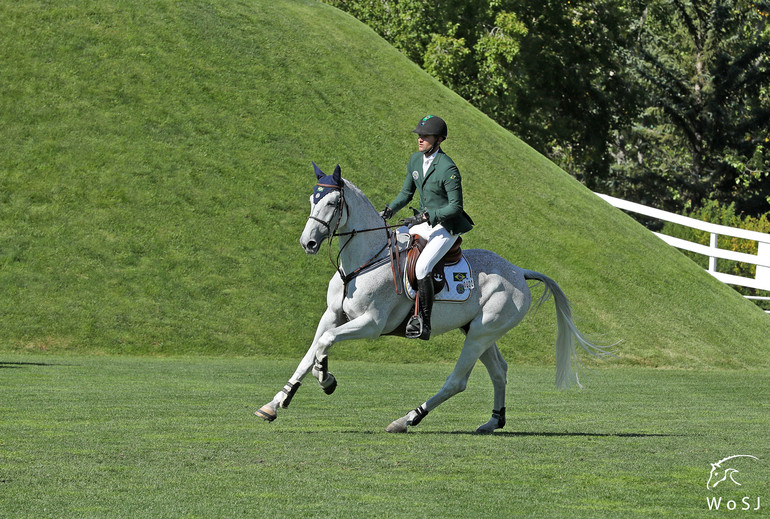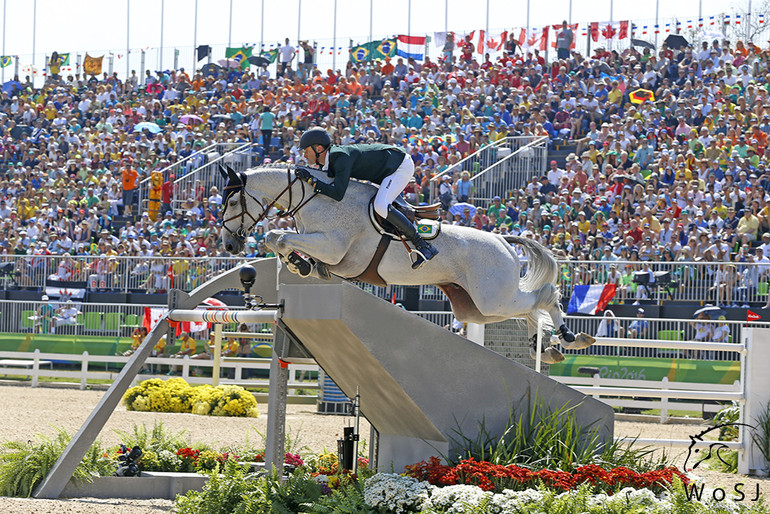
“I have lived longer outside my home country than I have lived inside it. It is not easy, being away from your family, but it is what I need to do in order to chase the top of the sport – because the top is in Europe," Eduardo Pereira De Menezes tells WoSJ. Photo © Jenny Abrahamsson for World of Showjumping.
Text © World of Showjumping
Eduardo Pereira De Menezes’ journey to become a professional rider has taken him from his native Brazil to Mexico, from Mexico to the United States, and then on to Europe – a travel that has given the 42-year-old a unique insight into the global aspects of the sport. “Riders in some of the South American nations have no chance to compete for ranking points; we are forced to leave our countries just to get a shot at the top sport – and this is hard. You cannot say that the system is fair for everybody, when the playing field is in fact completely uneven,” Menezes says.
“I moved out of Brazil when I was 18 and I am now 42, so I have lived longer outside my home country than I have lived inside it. It is not easy, being away from your family, but it is what I need to do in order to chase the top of the sport – because the top is in Europe. This has been the only option to get better every day, and to have the opportunity to ride for my country at those big events,” Menezes points out.
To World of Showjumping, Menezes speaks about distant dreams, how his move to Mexico changed his life, and how he believes it’s necessary to create a level playing field worldwide in order to make sure everyone has equal opportunities.
From one continent to the other
Menezes comes from Santa Maria, a small town in the south of Brazil, where showjumping as a sport did not exist. “In my area, riding cowboy-style, like gauchos, was the norm,” he tells. “The only possibility to ride the English way, was with the army. Luckily, a friend of my father was a general and promised to take me with him to the army’s stables to show me how to jump a horse. I was five years old when I started to go with him. He gave me a horse and taught me, and that is how it all started.”
I was always in love with the animal itself, even before I knew there was a sport of showjumping
“I was always in love with the animal itself, even before I knew there was a sport of showjumping,” Menezes continues. “In the beginning, I did not know that you could make a profession out of it. However, when I started to get more involved, I realized the opportunities there where within the sport. When I was 14, I told my parents; ‘I love horses so much, this is what I want to do for the rest of my life.’ My parents wanted to support me in doing what I loved, but asked me to finish my studies first. As the system in Brazil is totally different, I wanted to go Europe to learn more. As a rider in Brazil, you don’t get so much contact with the horses – you have grooms who do a lot for you. I wanted to learn everything from the bottom up, get to know the basics.”
“From one continent to the other, there is a huge difference in the approach to the sport,” he continues. “One of the biggest differences is that in the Americas the sport generally is something people practice in the city, like they practice tennis or golf. In Europe, it is a country sport, a family business, a tradition. If you go to ride in the Americas, you go to a club, you have a groom that gets your horse ready, you ride the few horses you have, and then you go home – whereas in Europe, you go to take care of your horse, clean it up yourself, tack it up, you do the whole thing yourself. It is a whole different mindset, another environment. The original reason why people practice the sport is fundamentally different.”
From one continent to the other, there is a huge difference in the approach to the sport
“One of my first coaches in Brazil was Gustavo Diaz, an Argentinian guy who was friends with someone at Francois Mathy’s,” Menezes tells. “I first worked for Gustavo in Brazil for about six months before I came to Europe, to Mathy’s place. I was there about six months, and then a friend of mine, who at the time was riding for La Silla, got me a job in Mexico. So I went to Monterrey, and this is how my relationship with Mexico started. I stayed two years in Monterrey, then I tried to go to the States, I was there a few months, then I went back to Europe and Roger Yves Bost helped me to find another job. I stayed in France for two years.”
In 2001, Menezes was unable to ride for nearly a year due to two injuries and two major operations. This rough period in his life forced him to think about his options, and he felt a need to return to Mexico – where he had felt very much at home. “At the time I could not ride so much because of my injuries, but I knew I at least could get a job teaching there,” he tells. “So, I returned to Mexico, and a few months later I was hired by Enrique Gonzalez and to this day we are partners. During this time, I also met the Hank-family, who later came to support me with their H5-horses.”
H5
Most of Menezes’ horses carry the H5-prefix, like H5 Quintol (Quintender 2 x Cento) – his horse at the 2016 Olympic Games in Rio de Janeiro, and H5 Chaganus – his ride at the 2019 Pan American Games in Lima. “H5 is a prefix used by the Hank Guerreiro-family,” Menezes explains. “Our co-operation started over 17 years ago at the time that I was riding for Enrique, and Sara Hank Guerreiro began riding at our place. As an employee, I would sometimes give her lessons. Because of her love for horses and horse shows, her husband Carlos started to ride as well. They had a few horses, and were one of the many amateur clients we had at the time in Mexico City.”
Respect is a solid foundation, and I think respect has been our base – like in everything, in any long relationship
Little by little, the operation grew bigger. “Sara and Carlos got more engaged, as did their children, they rode more and jumped bigger classes, bought better horses,” Menezes continues. “In 2010, I moved with them to California for one year, because they wanted to go there with their children. However, we liked it so much that we extended our stay – first with one more year, then with another… In the end, we stayed in California for six years, and I bought a farm there. Step by step, the H5 group supported me with better young horses and one of those horses was Quintol, that took me all the way to the Olympics, Pan American Games, and CHIO Aachen. After the Rio Olympics, the H5 group bought a farm in Wellington, because by then our operation was so big that California felt too small for us in regards to the shows that were nearby. We also started to go to Europe for a few months every year, and in 2019 Carlos Jr. and I decided to spend more time here.”
“It has been a long partnership,” Menezes says. “Respect is a solid foundation, and I think respect has been our base – like in everything, in any long relationship. They are very loyal and respectful to me, and vice versa.”
“Today, we spend most of our time in Europe,” Menezes tells. “I have horses that I own myself, and horses that I own together with Enrique Gonzales. We also have a couple of horses that we own between the three of us, and then I have a few horses that the H5 group supports me with. In total, for the whole group, we have over 50 horses, but for myself to ride I have eight older competition horses and six younger horses. When in Europe, we are based in Belgium, between Antwerp and Brussels, but we also compete in North America – normally we come to Europe after the season in Wellington is over.”
A distant dream
Competing for the Brazilian team has been a dream come true for Menezes – who was part of the team at the 2016 Olympic Games in Rio de Janeiro as well as at the Pan American Games in Lima in 2019. “When I was a child, I watched the Volvo World Cup on TV,” Menezes tells. “Nelson and Rodrigo Pessoa were competing, and I would watch them and say, ‘that is what I want to do one day, I want to ride for my country like them’ – they were my heroes. It is a really special feeling to ride for your country, to defend your flag. I don’t come from a big equestrian family, or from a strong equestrian country. For me, everything started as a dream very, very far away. Just to arrive at this point, is a dream come true. However, I am very ambitious and very persistent, so once I reach a goal, I always want more. Now, I want to perform, not only be here. Being able to go to these events, to compete against the best horses and riders – who, growing up, have been my idols – and see that I have been able to beat them a few times, is a very special feeling. One of the highlights of my career so far was competing at the Olympic Games in my own country. I was very lucky to achieve that; it was a special experience. The gold medal with the team at the 2019 Pan American Games in Lima was another dream come true.”
For me, everything started as a dream very, very far away
To reach the top of the sport, Menezes has chosen to live most of his adult life outside Brazil. “I know many fantastic riders over there that have a really nice career,” he says. “However, I come from a tiny town where the sport did not exist. In the bigger cities; Sao Paolo, Rio de Janeiro, you can find a lot of horses and many good riders. However, the difficulty is the logistics. Brazil is really far away, and if you want to be at the top of the sport, you need to put the horses on a plane every time you want to compete at a big show, you can’t just put them on the truck and drive – and the costs related to these kind of journeys are of course very high. That is a huge obstacle for riders and owners based in Brazil.”
Working for a level playing field
While simply leaving Brazil is the first, huge, obstacle, there are more hurdles for anyone aiming to compete internationally. “With the current ranking and invitation system, you can be as good as any other rider in the world but not have the ranking needed to get an invite to a show,” Menezes points out. “Coming from Brazil – or any other South American country – it will cost you a lot of money to come over to Europe and you will only be able to compete at the smaller shows, unless you are invited with a team to a CSIO, and there are only few of those places. Many riders like myself come and end up staying outside of Brazil, because doing this sport on the highest level is simply too complicated if you want to be based there. Even though the FEI shows in Brazil are good, there are not enough of them. For a Brazilian organizer it is very challenging economically: First of all, you need to have a foreign judge, a technical delegate and a course designer from another country. In Europe, putting that together is easy. In Brazil, you need to fly all the officials in, and then there is a huge difference in the prize money as well because of the currency conversion. When you convert Swiss francs, it gets really expensive, and it is hard for countries like Brazil to keep up with the international level. For a ranking class that over here is 25,000 Euros, if you compare that to the minimum salary of European countries and to what that money is worth in a country like Brazil, the cost to organize a show in Brazil is ten-times higher than in Europe. How can you ask a South American country to have the same financials as Switzerland? It is impossible.”
You cannot say that the system is fair for everybody, when the playing field is in fact completely uneven
“I am not a specialist and I don’t pretend to know better than anyone else,” Menezes continues to speak about the issues concerning the current invitation system that is tied to the world ranking. “However, a few of us that have lived in this situation have thought about a solution: The prize money requirements for each country should be based on the national minimum wage. This would give a chance to riders in less developed countries, to at least compete on two- and three-star level and get ranking points in order to appear on the ranking. This way, if they are good enough, when they come to Europe, they can at least have access to three-star shows. That would make for a more fair system, and give the riders outside Western Europe, the States, Canada and Mexico, a chance to have a shot at the bigger shows. I have had a meeting with the FEI this year in Wellington and we have put all these ideas forward. I know it won’t be easy to make it work in practice. However, life is not easy and if you start with the mindset ‘this is not easy’, you will never improve anything. Anything that is good, is difficult, and you have to work for it.”
No reproduction without written permission, copyright © World of Showjumping.com



